The Right Milkweeds for Helping Monarchs
NHM’s Nature Gardens horticulturists explain why planting native milkweed, and not the tropical variety, is crucial to helping monarchs migrate.
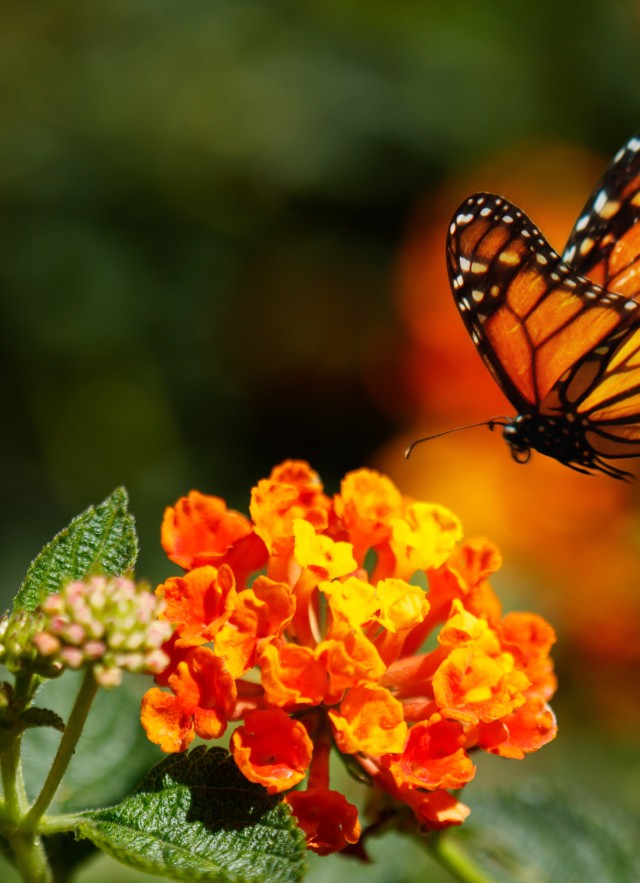
Monarch butterflies are migrating now, and Angelenos are eager to help them on their journey. Look around town and there's proof— tropical milkweeds, blooming red and yellow, are flourishing in gardens across the urban landscape. These plants are members of the only genus to host monarch caterpillars. Loss of the butterflies’ breeding habitats—where they might find these plants in the wild—is thought to be a major factor in their steep decline.
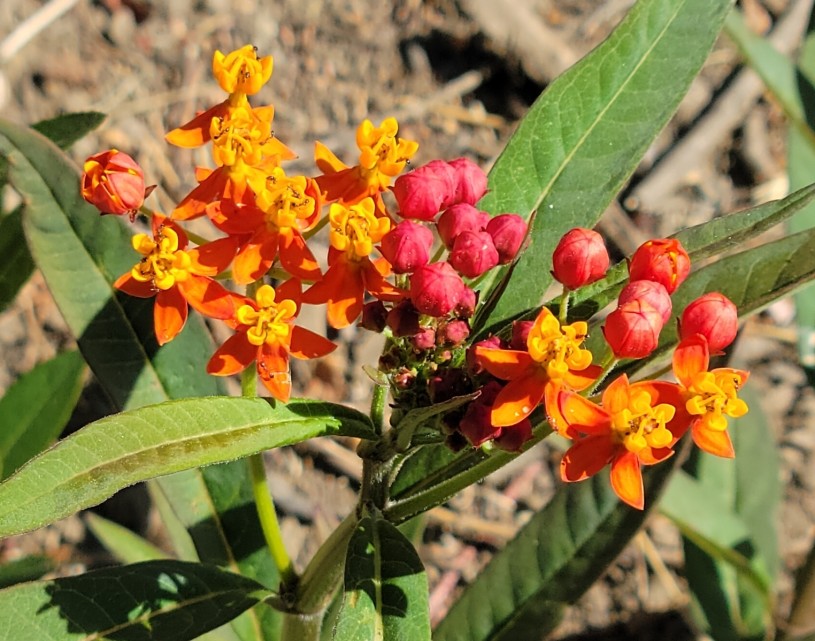
Photo by iNaturalist user garmonb0zia image 227633397
Red and Yellow–Parasites, Say Hello
Unfortunately, these pretty flowers are a menace to monarchs (Danaus plexippus). The butterflies need milkweeds to complete their life cycle. But the tropical variety don’t die back in the winter months, remaining leafy nearly year-round and confusing monarchs’ famed migration.
Not dying back gives Ophryocystis elektroscirrha (OE)—a protozoan parasite that cripples monarchs’ ability to fly—time to build up to dangerous levels. Monarch caterpillars exclusively eat milkweed leaves, and while they’re toxic to most animals, the leaves impart their poison to the caterpillars as a means of protection from prey. Unfortunately, those same leaves—if infested—impart the OE parasite, and infected caterpillars emerge as butterflies covered with OE spores perpetuating the cycle of infection. Butterflies with OE can have shorter lives, deformed wings, and reduced flying ability which makes them less likely to complete their migration.
Pink and White–This Milkweed's All Right
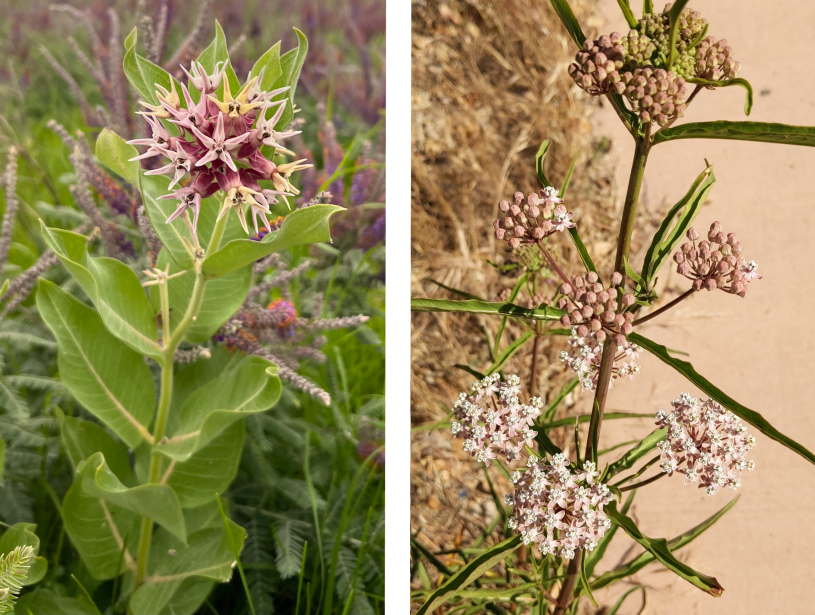
You can still help monarch butterflies—and other local pollinators—by planting milkweed. There are 15 species native to California, and two of the most widely available for purchase are the showy milkweed (Asclepias speciosa) and the narrow-leaved milkweed (A. fascicularis).
The showy milkweed lives up to its common name with star-shaped, white petals above rich pink-to-purplish flowers.
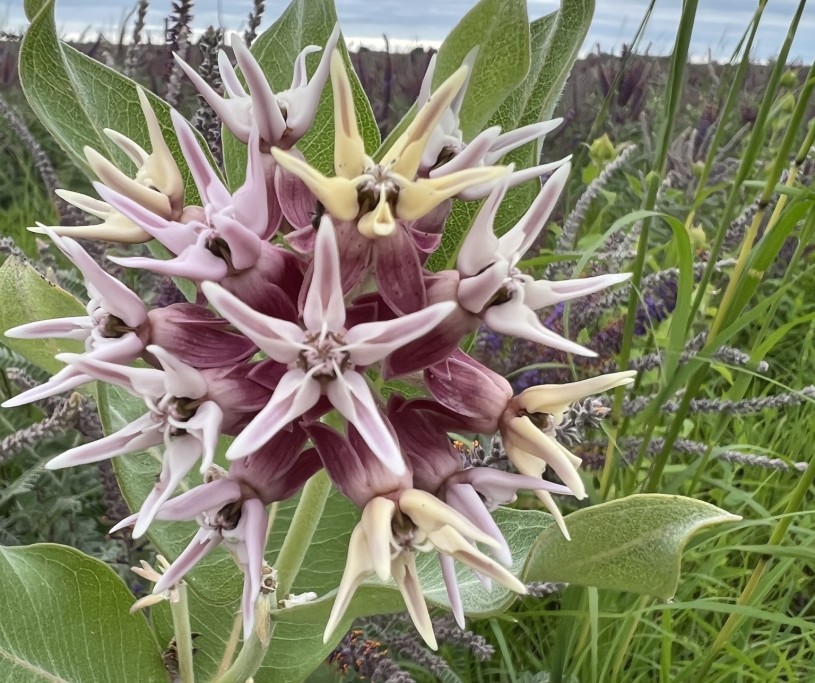
The narrowleaf milkweed with its long, thin leaves typically coiled around the stem, is more regionally appropriate to the L.A. area, and its clusters of pastel pink flowers are a great addition to any garden.
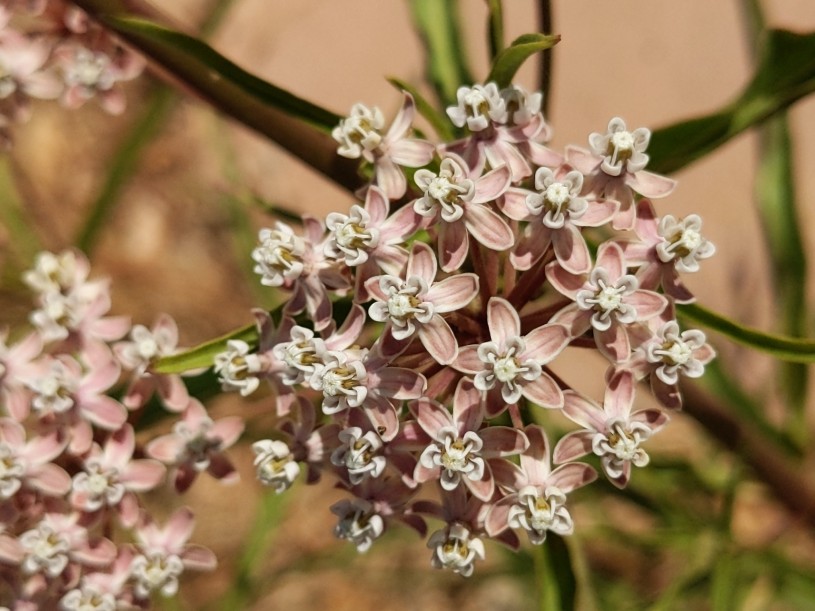
One place where you won’t find tropical milkweed anymore? Our Nature Gardens. “The California Department of Food and Agriculture designated tropical milkweed as a noxious weed because they can be harmful to monarchs. We’ve been removing tropical milkweed from the Nature Garden and replacing it with narrowleaf milkweed,” says Daniel Feldman, Senior Manager of Horticulture at NHM.
When you’re looking for native milkweed, pink and white are the colors to keep in mind. If you’re unable to find native milkweeds near you, or you just can’t stand the thought of getting rid of your tropical milkweed, you should consider drastically cutting back the plant at the end of summer or early fall—cutting around six inches of height–to mimic the seasonal dormancy of native plants. This can go a long way to reducing OE spores. Natives may not bloom for as long, but they’ll help monarchs flourish.
“While mostly benefitting monarchs as hosts for their larvae, native milkweed helps other native insects as well,” says Feldman. “It’s also important to plant other nectar sources to help adult monarchs refuel on their journeys. Native sage, manzanita, and willows are some great options."